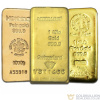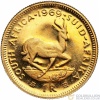Maximising Your Wealth: The British Investor’s Handbook to Gold

In the world of investing, gold has long been considered a valuable asset for British investors seeking to maximise their wealth. Understanding the value of gold, investing wisely, and maximising returns are essential aspects of incorporating this precious metal into your investment strategy. This article explores key insights and strategies for British investors looking to navigate the gold market effectively and optimise their financial portfolios.
Key Takeaways
- Gold holds significant historical significance as a store of value and safe haven asset.
- The intrinsic value of gold is derived from its scarcity, durability, and demand in various industries.
- Monitoring market trends is crucial for making informed decisions when investing in gold.
- Diversifying your investment portfolio with gold can help mitigate risks and enhance overall returns.
- Taking a long-term perspective when investing in gold can lead to more stable and profitable outcomes.
Understanding the Value of Gold
Historical Significance
Throughout the ages, we’ve witnessed gold’s remarkable journey as the cornerstone of wealth and power. Its allure has captivated societies, driving exploration and conquest, and it has consistently held a pivotal role in global economies. Gold’s enduring legacy is a testament to its unshakeable value.
Gold’s status has been enshrined in the monetary systems of empires and nations, often serving as a standard for currency. The Gold Standard was a prime example of this, where the value of a country’s currency was directly linked to a specific amount of gold. This historical practise underpins gold’s reputation as a stable and reliable asset.
- The Lydians, around 700 BC, were the first to use gold coins as currency.
- In 1717, Sir Isaac Newton, as Master of the Mint, set a price for gold that lasted for two centuries.
- The Bretton Woods system post-World War II established the US dollar’s value in terms of gold.
In our quest for financial security, it’s crucial to remember that gold has not only been a medium of exchange but also a symbol of wealth and a safeguard against economic uncertainty.
Intrinsic Value
We often speak of gold’s intrinsic value, a concept that has underpinned its status as a wealth preserver for centuries. Unlike paper currency, gold maintains its worth over long periods, particularly during times of economic instability. Gold is also known to preserve wealth when paper money loses its value. As a result, when other asset classes, such as equities and stocks, decline, gold often retains or increases in value, providing a stabilising effect for investors.
The intrinsic value of gold is not solely based on its rarity or beauty, but also on its practical applications. It’s widely used in electronics, medicine, and aerospace, ensuring a consistent demand that supports its value.
To further understand gold’s intrinsic value, consider the following points:
- Gold is durable and does not corrode, maintaining its quality indefinitely.
- It is malleable and conductive, making it useful in various industries.
- Gold’s scarcity and the energy required to extract it contribute to its inherent worth.
Market Trends
As we delve into the market trends of gold, it’s crucial to recognise the dynamic nature of its pricing. Gold prices are influenced by a myriad of factors, ranging from global economic stability to the strength of the US dollar. We’ve observed that during times of economic uncertainty, gold often becomes a haven for investors, leading to a surge in its value.
Volatility is a key characteristic of the gold market, and understanding this can be the difference between profit and loss. To illustrate, let’s consider the following table showing the annual average gold prices over the last five years:
| Year | Average Price (GBP/oz) |
|---|---|
| 2018 | 973.58 |
| 2019 | 1,157.42 |
| 2020 | 1,367.58 |
| 2021 | 1,273.44 |
| 2022 | 1,321.67 |
This table not only reflects the fluctuations but also highlights the upward trend in recent years. It’s important to note that past performance is not indicative of future results, but it does provide us with valuable insights.
In our pursuit of wealth maximisation, we must stay abreast of these trends and adapt our strategies accordingly. The ability to read the market and anticipate changes is essential for any savvy investor.
Lastly, it’s worth mentioning that the gold market is not just about the metal itself. The market also includes various products and services related to gold investment. For instance, a website page offers a variety of silver bars for sale, including Umicore, GBD, Metalor, and plain silver bars. This diversity in the market can provide additional opportunities for us to expand our investment portfolio.
Investing in Gold Wisely
Diversification Strategies
In our journey to maximise wealth through gold investments, we’ve come to understand the paramount importance of diversification. Diversification is the cornerstone of any robust investment strategy, and gold plays a critical role in this. By spreading our investments across various asset classes, we not only mitigate risk but also position ourselves to capitalise on different economic cycles.
When incorporating gold into our portfolio, we must consider its correlation with other assets. Typically, gold has a negative correlation with stocks and bonds, which means it can act as a hedge during market downturns. Here’s a simple breakdown of how gold can complement other assets in a diversified portfolio:
- Equities: Potential for high returns but subject to market volatility.
- Bonds: Offer stable income and are less volatile than equities.
- Real Estate: Can provide rental income and long-term appreciation.
- Cash: Offers liquidity and a buffer during market stress.
- Gold: Serves as a hedge against inflation and currency devaluation.
By judiciously balancing these assets, we can create a portfolio that is resilient in the face of market fluctuations and geopolitical uncertainties. It’s not just about having a variety of investments; it’s about having the right mix that aligns with our long-term financial goals.
Risk Management
In our journey to wealth maximisation through gold investment, we must pay heed to risk management. It’s not just about the potential gains; it’s about safeguarding our capital against the unforeseen. Diversifying our gold investments is crucial to mitigate risks. This means not putting all our eggs in one basket, but rather spreading our investments across various forms of gold assets, such as bullion, coins, and gold stocks.
By understanding the different types of risks associated with gold investing, such as market volatility, inflation risk, and geopolitical uncertainties, we can better prepare our portfolio to withstand market shocks.
Here’s a simple list to keep in mind for effective risk management:
- Regularly review and adjust our gold holdings in response to market conditions.
- Set clear investment goals and risk tolerance levels.
- Stay informed about global economic indicators that affect gold prices.
- Consider the use of hedging strategies to protect against adverse price movements.
Long-Term Perspective
Adopting a long-term perspective is crucial when investing in gold. We must recognise that the value of gold does not solely depend on short-term market fluctuations but also on its enduring appeal and stability over decades. Gold should be viewed as a marathon, not a sprint, and patience is often rewarded.
- Understand that gold is a hedge against inflation and currency devaluation over time.
- Remember that historical performance is not an indicator of future results, but gold has consistently maintained its value.
By focusing on the long-term, we allow our gold investments to mature and potentially benefit from the compound growth of our assets.
It’s also important to stay abreast of global economic trends, as these can influence gold prices. As suggested by a recent CBS News article, ‘The top 5 tips for investing in gold in 2024’, we should explore different forms of gold investments and ensure that our portfolio is well-diversified. This approach helps mitigate risk and positions us to take advantage of opportunities as they arise.
Maximising Returns with Gold
Timing the Market
When we consider the timing of our investments in gold, we’re essentially trying to predict market fluctuations to buy low and sell high. It’s a challenging endeavour, but not without its merits. By keeping a close eye on economic indicators and geopolitical events, we can make educated guesses about when gold prices might rise or fall.
- Monitor global economic indicators
- Stay informed about geopolitical events
- Analyse historical gold price patterns
It’s crucial to remember that timing the market requires patience and a willingness to act when the moment seems right. There’s no foolproof method, but being informed can give us an edge.
While we strive to time our purchases and sales effectively, we must acknowledge the inherent risks. The market can be unpredictable, and even seasoned investors can misjudge the market trends. To mitigate this, we should consider a mix of strategies, including long-term investments and diversification.
Portfolio Allocation
When we consider the role of gold in our investment portfolios, it’s crucial to strike a balance that aligns with our risk tolerance and investment goals. Diversifying our assets is key, and gold often plays a pivotal role in this strategy due to its historical stability and potential to hedge against inflation and currency fluctuations.
Allocation percentages can vary widely depending on individual circumstances, but a common approach is to hold a mix of physical gold, gold ETFs, and gold mining stocks. Here’s a simple breakdown to illustrate a balanced gold investment portfolio:
- Physical gold (coins, bars): 50%
- Gold ETFs: 30%
- Gold mining stocks: 20%
This mix allows us to benefit from the tangible security of physical gold while also gaining exposure to the gold market through more liquid assets like ETFs and stocks. It’s important to regularly review and adjust our portfolio to ensure it remains in line with our evolving financial landscape.
By maintaining a well-considered allocation of gold within our portfolio, we can enhance our overall investment resilience and potential for growth.
Tax Considerations
When we delve into the realm of taxation, it’s crucial to recognise that most investments are subject to some form of taxation. However, physical gold can be an exception. We can benefit from gold being totally free of VAT and capital gains tax, depending on the type of gold and how it’s held. For instance, investment-grade gold bullion is VAT exempt in the United Kingdom.
It’s essential to understand the tax implications of gold investment to maximise our returns.
Here’s a quick guide to the tax advantages of different gold investments:
- Investment-grade gold bullion: VAT exempt
- Gold coins of sufficient purity: Capital Gains Tax (CGT) exempt
- Gold ETFs: Subject to CGT but not VAT
By strategically planning our gold investments, we can potentially reduce our tax liability and enhance our overall returns. It’s advisable to consult with a tax professional to ensure compliance with the latest regulations and to take full advantage of these tax benefits.
Conclusion
In conclusion, gold remains a valuable asset for British investors looking to maximise their wealth. By understanding the history, market trends, and investment strategies outlined in this handbook, investors can make informed decisions to leverage the power of gold in their portfolios. Whether as a hedge against inflation, a safe haven in times of economic uncertainty, or a long-term investment for wealth preservation, gold continues to play a significant role in diversifying and safeguarding wealth. As you navigate the world of investing, remember that gold’s enduring allure and intrinsic value make it a timeless asset worth considering in your financial journey.
Frequently Asked Questions
Is gold a safe investment option for British investors?
Gold is often considered a safe haven asset due to its historical stability and ability to preserve wealth during economic uncertainties.
How can I determine the value of gold in the market?
The value of gold is influenced by various factors including supply and demand dynamics, geopolitical events, and economic indicators.
What are the risks associated with investing in gold?
Risks of investing in gold include price volatility, market manipulation, and the potential for regulatory changes impacting the gold market.
Should I invest in physical gold or gold-related financial products?
The choice between physical gold and gold-related financial products depends on individual preferences, investment goals, and risk tolerance.
How can I protect my gold investments from market fluctuations?
Diversification, risk management strategies, and a long-term perspective can help protect gold investments from market fluctuations.
Are there any tax implications when investing in gold?
Investors should be aware of tax considerations such as capital gains tax and VAT when buying, selling, or holding gold investments.










